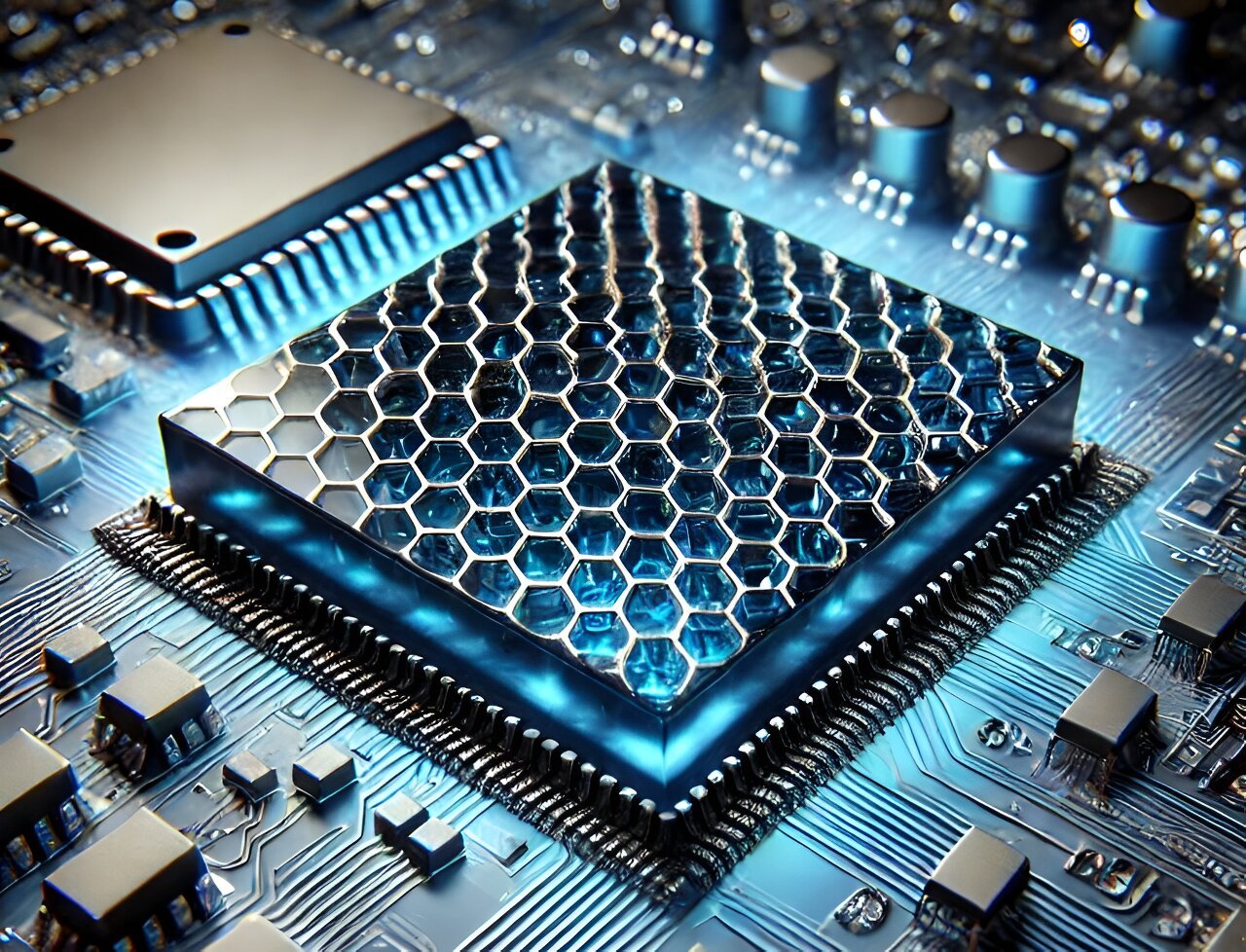
Spintronics uses the spins of electrons to perform logic operations or store information. Ideally, spintronic devices could operate faster and more energy-efficiently than conventional semiconductor devices. However, it is still difficult to create and manipulate spin textures in materials.
Graphene, a two-dimensional honeycomb structure built by carbon atoms, is considered an interesting candidate for spintronic applications. Graphene is typically deposited on a thin film of heavy metal.
At the interface between graphene and heavy metal, a strong spin-orbit coupling develops, which gives rise to different quantum effects, including a spin-orbit splitting of energy levels (Rashba effect) and a canting in the alignment of spins (Dzyaloshinskii-Moriya interaction. The spin canting effect is especially needed to stabilize vortex-like spin textures, known as skyrmions, which are particularly suitable for spintronics.
Now, however, a Spanish-German team has shown that these effects are significantly enhanced when a few monolayers of the ferromagnetic element cobalt are inserted between the graphene and the heavy metal (here: iridium). The samples were grown on insulating substrates, which is a necessary prerequisite for the implementation of multifunctional spintronic devices exploiting these effects.
The research is published in the journal ACS Nano.
“At BESSY II, we have analyzed the electronic structures at the interfaces between graphene, cobalt and iridium,” says Dr. Jaime Sánchez-Barriga, a physicist at HZB. The most important finding: contrary to expectations, the graphene interacts not only with the cobalt, but also through the cobalt with the iridium.
“The interaction between the graphene and the heavy metal iridium is mediated by the ferromagnetic cobalt layer,” Sánchez-Barriga explains. The ferromagnetic layer enhances the splitting of the energy levels.
“We can influence the spin-canting effect by the number of cobalt monolayers; three monolayers are best,” says Sanchez-Barriga.
This result is supported not only by experimental data, but also by new calculations using density functional theory. The fact that both quantum effects influence and reinforce each other is new and unexpected.
“We were only able to obtain these new insights because BESSY II offers extremely sensitive instruments for measuring photoemission with spin resolution (Spin-ARPES). This leads to the fortunate situation that we can determine the assumed origin of the spin canting, i. e., the Rashba-type spin-orbit splitting, very precisely, probably even more precisely than the spin canting itself,” emphasizes Prof. Oliver Rader, who heads the “Spin and Topology in Quantum Materials” department at HZB.
There are only a very few institutions worldwide that have instruments with these capabilities. The results show that graphene-based heterostructures have great potential for the next generation of spintronic devices.
More information:
Beatriz Muñiz Cano et al, Rashba-like Spin Textures in Graphene Promoted by Ferromagnet-Mediated Electronic Hybridization with a Heavy Metal, ACS Nano (2024). DOI: 10.1021/acsnano.4c02154
Provided by
Helmholtz Association of German Research Centres
Citation:
Analysis of heterostructures for spintronics shows how two desired quantum-physical effects reinforce each other (2024, September 20)
retrieved 20 September 2024
from https://phys.org/news/2024-09-analysis-heterostructures-spintronics-desired-quantum.html
This document is subject to copyright. Apart from any fair dealing for the purpose of private study or research, no
part may be reproduced without the written permission. The content is provided for information purposes only.
